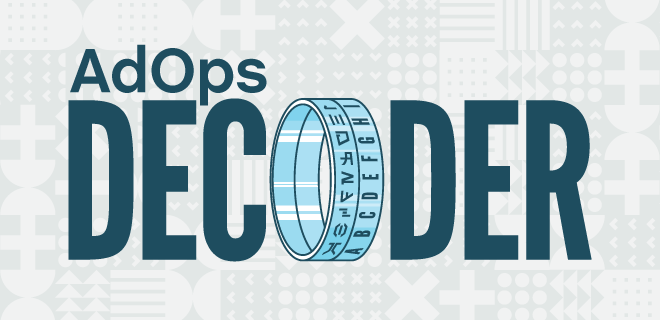
The podcast landscape continues to thrive, and podcasts are consistently gaining popularity as a medium, with millions of listeners tuning in daily. As the popularity of podcasts continues to grow, so does the opportunity for advertising in the podcast ecosystem.
Advertisers and brands should keep podcasts as a promotion channel in their media plan because podcast ads are effective and memorable.
Traditionally, podcast monetization relied on host-read sponsorships: ads were baked into the show, effectively becoming part of the content forever. However, suppose a new FTC guideline — about endorsements reflecting the experience of the advertising party — gets approved. That would place more scrutiny on the definition of personal endorsements done by podcasters, similar to other media.
The next evolution in podcast advertising was the ability to dynamically insert ads into the podcast, enabling more flexibility in planning and managing campaigns. However, sales strategies remained largely the same: the publishers (or their sales arm) negotiated an insertion order with the advertisers (or their agencies).
The Rise of Ad Trading in Podcasting
Programmatic advertising changes how agencies and independent trading desks trade ads: it uses computers to create efficient marketplaces where one or more bidders compete for a particular opportunity.
Programmatic podcast advertising is gaining market share, and more and more publishers are interested in integrating it within their monetization strategy, dramatically increasing revenue generation.
Old-school hosting platforms cannot trade programmatically, but now these efficiency features are available on the platforms that seriously invested in ad tech from the early days.
In this article, we will explore the value chain of podcast monetization and how programmatic advertising has changed the game for publishers and advertisers alike. However, we all know that with opportunities come unique challenges, so let’s start with the difficulties.
Publisher-side Challenges
Coherent ads in line with content: This is easy from a direct sales approach. But it is more of a challenge with programmatic buys at scale.
Finding a sponsor/brand/agency: Finding the right sponsor or brand to support content can be a significant challenge for publishers. With so many options, it can be difficult and lengthy for publishers to stand out and attract the right brand for their audience.
Running campaigns across inventory: Ad operation teams manage campaigns, but ensuring that a campaign runs smoothly across the entire inventory requires technical expertise and resources.
Renewing a sponsor or finding new ones: Sales ops is another challenge for publishers when it comes to advertising. Finding new sponsors and renewing existing relationships requires a dedicated sales team and a well-established process.
Reporting and doing make-goods: (If under-delivered) or giving inventory for free (if over-delivered). Ensuring that the right metrics and measurement solutions are in place and that the inventory is utilized effectively is essential for success.
Advertiser-side Challenges
Targeting capabilities (content and audience): On the demand side, finding the correct audience and delivering the right content can be difficult without the necessary data, tools, and resources. Especially today, where privacy and security laws are constantly getting more constringent.
Brand safety & suitability: Ensuring brand-safe and suitable content is also challenging for demand side partners. This requires a strong understanding of the content itself and the audience.
Monitoring and Reporting on ROI: Finally, monitoring and reporting on ROI can be challenging for demand-side partners. To achieve success, it is important to have the right tools to monitor the correct metrics and ensure that the ROI is measured effectively.
Solution
At Spreaker from iHeart, we have developed the secret sauce for successful programmatic podcast advertising.
Conveniently the solutions all begin with S — we like to call it the 3 S’s of monetization and advertising success:
- Sustainability
- Scalability
- Safety
Sustainable: Avoid the “once in a Blue Moon”
When starting a podcast, you want to make sure that earnings, supported by multiple ad opportunities, are constantly coming in. Publishers should not let any inventory remain unsold. It also means the programmatic strategy is fully compatible with other revenue streams, including direct sales and sponsorships. Conversely, advertisers can rely on programmatic buys to customize and adjust their clients’ needs throughout the year.
Scalable: From Download #1 to #1 Billion
No podcast starts with one million downloads on the first day, so progressive audience growth needs to be accompanied by a scalable revenue stream. Moreover, dynamic ad injection coupled with programmatic buys allows publishers to place and replace ads over time after the initial exclusivity and grace period at scale.
On the buyer side, brands and advertisers use advanced audience targeting, reach, scale, real-time campaign monitoring, and attribution reporting to justify investing wisely in programmatic.
Safe: Safety Lasts
Safety should come first, but it’s also last in podcast advertising. Safety creates a bond of trust between the publisher and the advertiser by targeting safe content and by making sure that the ads are correctly assigned to the targeted content. Under this umbrella, the ad tech and programmatic ecosystem can provide tools to empower brand safety and eventual suitability (with products by companies like Barometer and Sounder and many others), content transparency, and ad quality at scale, like our AI + human solution called M.A.G.D.A..
The 3 S’s of monetization success, Sustainability, Scalability, and Safety, are the crucial combination for any publisher looking to monetize their podcasts and advertisers looking to invest their budget wisely.
By focusing on these three key factors, we can ensure that podcast advertising efforts are effective, efficient, and profitable for both advertisers and publishers.